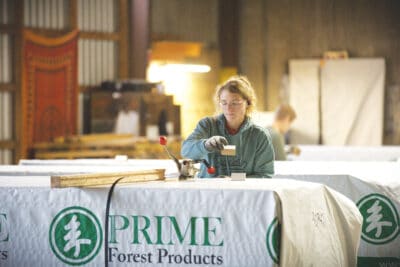The dramatically changing market conditions, and evolving supply chain dynamics in the construction sector, necessitated a review and refinement of the Softwood Lumber Board’s (SLB) go-to-market strategy. In Q3, the SLB set out to validate previous assumptions, investment priorities, and scope as well as update end-use demand forecasts for both traditional and emerging market segments for Softwood lumber.
As a part of this process, the SLB conducted interviews with 57 industry stakeholders to validate the mission, programs, goals, and activities and identify gaps and areas for improvement. The respondents were nearly unanimous in recognizing the SLB’s performance and management, confirming that the SLB’s strategy, funding priorities, and program approaches meet our investors and industry stakeholders’ needs and interests.
Moving into 2021, SLB’s investments continue to focus on five key areas: codes, communications, conversion, education, and innovation. Each of these is interconnected and complement one another to bolster the collective impact. Investments are strategically weighted among the five focus areas to optimize service delivery and ensure the most effective use of industry funds. The SLB remains a data-driven organization, making investments on a need or opportunity basis and ensuring the outcomes are evaluated and measured. Nevertheless, most stakeholders also believe that the SLB should expand its strategic priorities to meet future challenges, including the potentially substantial and lasting impact of the pandemic on society and – by extension – the Softwood lumber industry.
Our team has reviewed and organized proposed ideas for expansion into five priority areas and is currently assessing how to best deliver impact in these areas. At the same time, the SLB remains cognizant that it can’t be everything to everyone and will remain true to its core mission of increasing demand for Softwood lumber. For operational topics raised in the stakeholder interviews, such as communicating metrics, expanding and leveraging partnerships, and industry relations, staff are exploring various actionable ways to improve our approach and enhance what has been delivered to date.
Softwood Lumber Board Stakeholder Insights
Carbon and Climate Change. Softwood lumber provides important carbon sequestration benefits and a pathway for buildings to achieve carbon neutrality. The SLB can create tremendous value for the industry by promoting and capitalizing on wood’s carbon benefit through program development and strategic partnerships.
Forests. Through partnerships and direct work, the SLB can integrate issues of forest access, working forests, and their beneficial impacts on landscapes and wood products development into promotion efforts in order to help motivate best practice in forest management.
Dramatic Change Affecting the Built Environment. Shifts in commercial and non-residential construction markets and in residential and consumer preferences, including as induced by COVID-19, are likely to affect the building and construction industry for generations to come. The SLB is working to deepen its understanding of these forces in order to support the industry to adapt and capitalize.
Mass Timber and Hybrid Construction. Tremendous strides have been made to gain mass timber acceptance; now the SLB must ensure adoption of 2021 IBC codes at local levels, address additional code barriers such as encapsulation restrictions, and solidify the research case for hybrid construction as a way to grow and sustain mass timber’s market share.
Residential Construction. Long an anchor for the industry, the residential segment is facing growing threats from competing materials and unfriendly regulations in wildland-urban interface areas and high-wind zones. Investment in market protection and promotion is increasingly warranted.
We are grateful that we have earned your trust, and we look forward to continuing to receive your insights and guidance as we seek to take advantage of the many opportunities and address the challenges that affect Softwood lumber’s market share. Please reach out at any time with questions or comments about where we are headed with the program or feedback on how we can improve how we serve the industry – I can be reached at (425) 502-6967 or dejager@softwoodlumberboard.org.









